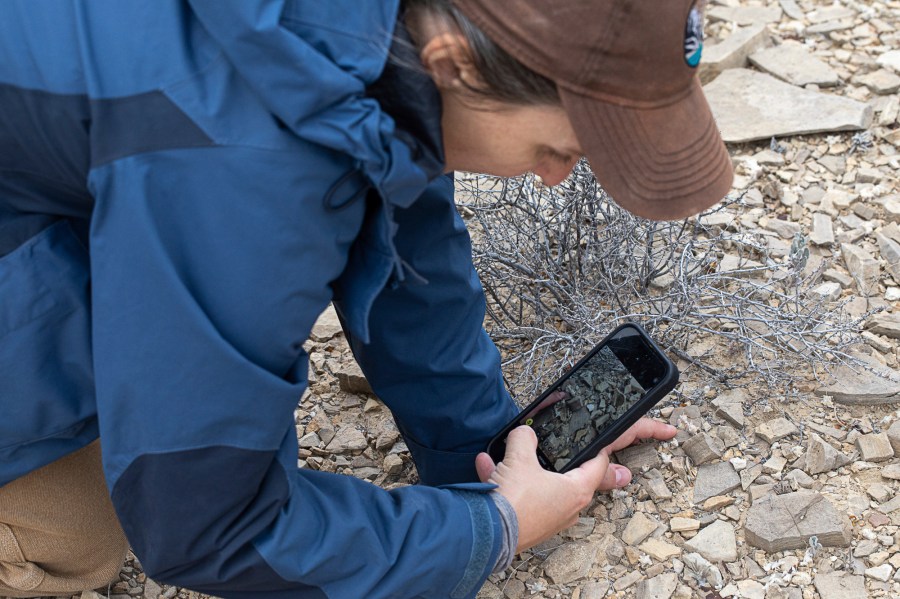Dallas (AP) – Scientists who want to know more about a tiny flower recently discovered in western Texas hope that it will flourish again in a few weeks after the rain finally fell into the region.
Nicknamed the woolly devil, the flower with fur leaves, purplish petals and touches of yellow are a new genus and species in the same family as sunflowers and Marguerites: Asteraceae. It was discovered last year in Big Bend National Park, known for its damaged land of desert, canyons and mountains, on the border with Mexico.
“There is a lot to learn with this species, so they are just beginning,” said Carolyn Whiting, Big Bend botanist.
Scientists hope that flowers will flourish again after the rain fell on the park struck from drought last week, giving them the opportunity to learn more, including when the plants germinate, said Whiting.
The flower was discovered in March 2024. The volunteer by Park Deb Manley and a Park Ranger were hiking in a distant region when they saw a smaller plot of flowers than a quarter and near the ground.
“We stopped and took photos and none of us had any idea,” said Manley. “I could attract him to the family, but I couldn't understand more than that. So we took photos and continued, without realizing that we had found a new kind. ”
When Manley returned from the hike, she started looking for what the flower could be. She quickly found that not only was she perplexed, but also others. His article on The Flower on Inaturalist, an online platform for nature lovers “caused a sensation,” said Isaac Lichter Marck, a researcher at California Academy of Sciences in San Francisco.
A. Michael Powell, conservative and director of the herbarium at the state University of Sul Ross in Alpine, said that when Manley had contacted him about the flower, he immediately thought it was something new.
“It was nothing that I had seen before,” said Powell, who greatly studied the region.
As a team went to take samples from the flower more than a month after the discovery, she had already started to withered.
“We really arrived just in one time before the specimens had been completely dried,” said Whiting.
The discovery of the flower was announced last month.
Lichter Marck said they had been able to extract the DNA from the flower but that there is still a lot to learn. He said they did not yet know how he reproduced, nor what potential uses could have. They must also determine if it is in danger.
The official name of the woolly devil – Ovicula Biradiata – is inspired by its appearance: ovicules, which means tiny sheep, is a nod to the hair that cover its leaves; While Biradiata, or Bi-Radial, refers to its two striped petals.
Kelsey Wogan, director of the environment laboratory at the state University of Sul Ross, said that she was delighted to see if the woolly devil could also be found in other places and what is its range.
Whiting said the park is so well studied that finding a new species has been a surprise.
“The fact that there are still species that had slipped under the radar is quite remarkable,” she said.
Wogan said that part of the excitement about the discovery of the flower is that it shows “there are still new things and not described there”.
“It is the big reminder of keeping your eyes open,” she said, “and if you don't know what something is, it could be completely new.”


